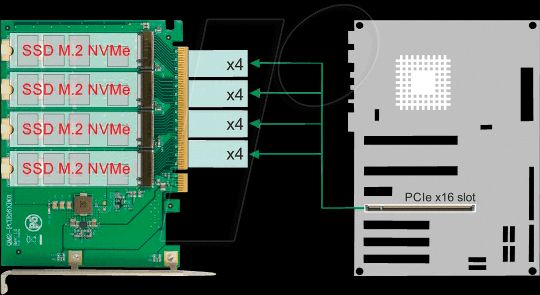What is PCIe Bifurcation?

PCIe bifurcation refers to the ability to split a single PCIe (Peripheral Component Interconnect Express) connection into multiple independent connections. This is useful when you want to connect several PCIe devices to a single PCIe slot on a motherboard, such as installing several graphics cards or expansion cards in a single slot.

To illustrate, let’s imagine an irrigation system where I use a thick hose to irrigate just one plant, but I would need to irrigate other plants as well to make better use of the water and gain performance in the task, in which case I would make small holes in the hose where it would also irrigate the other plants simultaneously. The Bifurcation would be those small holes I made in the hose to use it in the way I needed to perform my task.

The PCIe bifurcation process can vary depending on the motherboard and system, but generally involves the following steps:
- Compatibility Check: Make sure your motherboard supports PCIe bifurcation. This is usually listed in the motherboard specifications or user manual.
- Bifurcation hardware: In addition to a compatible motherboard, you’ll need a PCIe bifurcation adapter, also known as a bifurcator. This device is inserted into the PCIe slot and allows the lanes to be divided into several connections.
- BIOS configuration: Most motherboards allow you to configure PCIe bifurcation via the BIOS or UEFI settings. This is where you will define the distribution of the lanes.
The possible configurations for bifurcation would be as follows in an x16 slot: x4/x4/x4/x4 , x8/x4/x4, x4/x4/x8.
Remember that PCIe forking can be more complex than it seems, as it involves hardware compatibility, BIOS settings and operating system support. Always check motherboard specifications, user manuals and online resources before attempting PCIe bifurcation, and be prepared to face technical challenges if necessary.
See also our video available on our YouTube channel:
Master da Web, your Cloud solution! ☁️